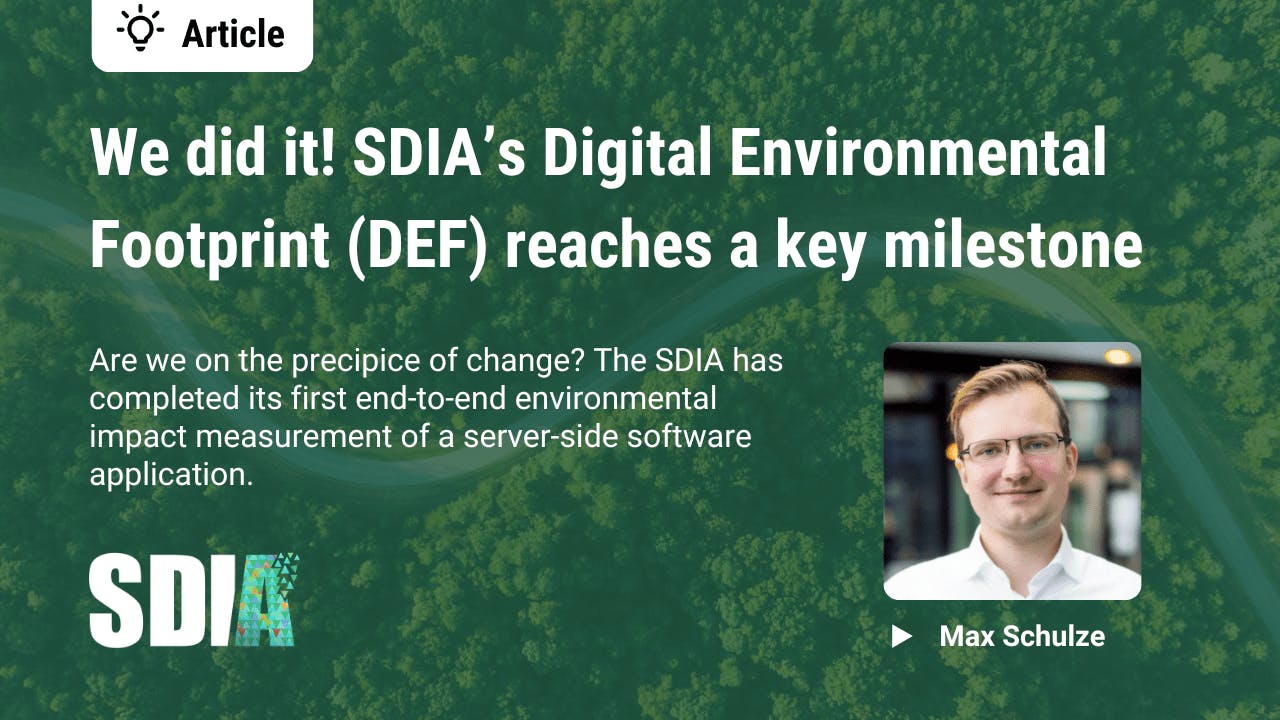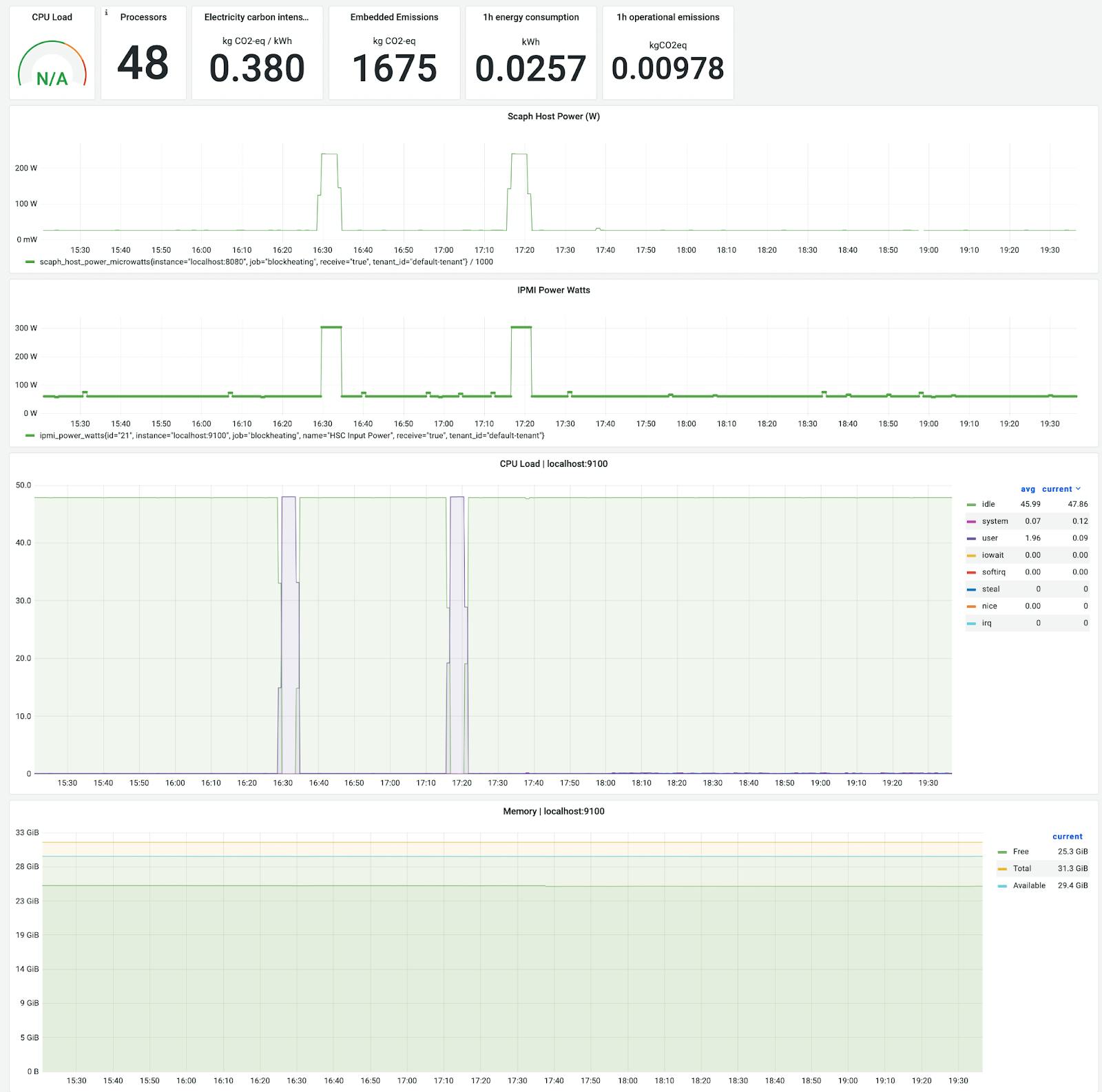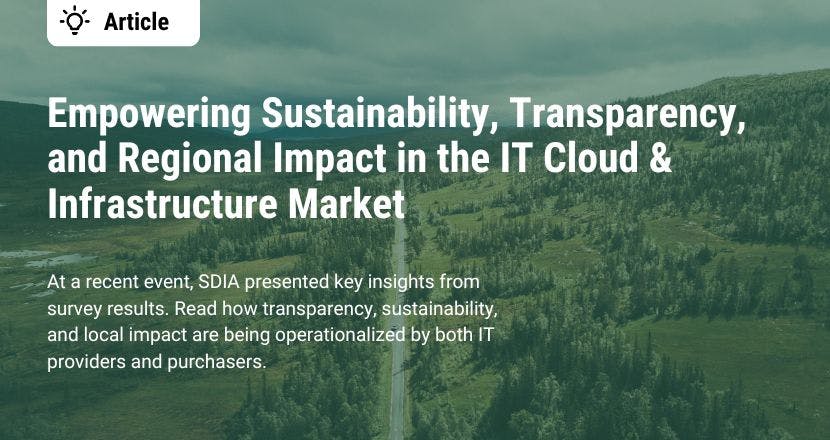Intel RAPL driver missing 26% of energy
One key observation we found interesting is that the Intel RAPL driver is missing about 26% of the power usage on this specific system. This is due to the fact that it does not measure the power usage of hard drives and other auxiliary equipment.
What we can also see is that the Open Compute servers we are using have a very high differential between idling state (60 W, CPU Load < 5%) and full load (300 W, CPU Load 100%). 60 W is still a lot of power for an idle server, but it is a step forward.
Next step, attribution
The next big step will be attributing the environmental impact of the server, including energy, to an IT application running on the same server (or a virtual machine). This attribution is important because assessing the total IT infrastructure footprint in isolation can lead to wrong conclusions.
Fundamentally, infrastructure exists to serve IT applications — hence the impact of the infrastructure must be attributed to an application along with any unused resources the application has requested. A good example of this are roads, which exist so that vehicles can drive on them, so in principle, each car necessitates the existence of a road.
This understanding is even more important in defining the environmental footprint of IT infrastructure, as we run into the risk of users demanding a reduction in IT infrastructure, without realizing that this must come with a sacrifice to functionality or availability.
Reducing or optimizing infrastructure without any change on the application layer can bring efficiency improvements, but are not likely to lead to sustainability improvements.
Consider this example, an application can run on a very efficient server, using limited energy, in a very efficient data center. Yet, the application is not functional e.g., the login is broken. Users are aware of this, so the application is not being used. Now the resource usage is very efficient, but wouldn’t it have been better to not have the application running at all?
For sustainable IT and any digital product or service in general, users, developers, and IT operations need to come together and ask the difficult questions: Does this application need to run all the time? Do we even need it? How can we add functionalities without increasing the underlying environmental impact? How can we utilize the infrastructure more efficiently?
By attributing the environmental impact and costs to an application, the entire organization can be engaged — customers (end-users), business analysts, designers, product managers, and not least the CEO in rethinking and redefining the requirements that led to all that software, and IT infrastructure consumption.
Credit where credit is due - meet the team that made it happen:
This key milestone would have not been possible without our members and partners making it happen. A big thank you goes out to everyone who helped with designing, building, and testing:
- Benoit Petit at Hubblo (Boavizta, Software)
- Christoph at Helio (Software)
- Jeroen & Joost at Blockheating (Data Center, IPMI, Servers)
- John Laban at the Open Compute Foundation (Brainpower, Servers)
- Jurg & Flavia van Vliet, Maarten Kamoen at Aknostic (Infrastructure, Brainpower)
- Fridtjof Chwoyka and Ludger Ackermannn at Data Center Excellence (Standardization, Data Center Infrastructure)
- And other friends and members of the community: Arne Tarar, Jeroen Burks, John Booth, Julia Streit, Marc Acton, Rob Elder, Stine Bjønnstu Holthe, Tom Keenes
And of course, none of it would have been possible without the work of some amazing researchers laying the groundwork:
- Jens Gröger, Felix Behrens at Öko Institut e.V.
- Stefan Naumann at Umwelt-Campus Birkenfeld
- Patricia Lago, Ivano Malavolta at VU Amsterdam
- Beth Whitehead, Robert Tozer, Sophia Flucker at Operational Intelligence
- Deborah Andrews at LSBU
- Jon Summers, Stani Borisova, Tor Björn Minde at RISE
- And many other researchers, among them Achim Guldner, Andreas Filler, Eva Kern, Lorenz M. Hilty, Jonathan Koomey, Yuliyan V. Maksimov
Last but not least, Inky Vos, who came on this journey to apply sustainability principles and the Life Cycle Assessment method to software. And, of course, thank you to our amazing SDIA team and advisors.
Also, special thanks to the German Environmental Protection Agency (UBA), German Economic Ministry (BMWK), and the European Commission who support this initiative with their funding.
What’s next in the process
Attribution of course! But aside from that, there are additional initiatives running that we would like your help with:
- More servers: We are still setting up more test systems and we would like anyone who has some servers in a data center willing to do some measurements to join our DEF Community.
- Hackathons: We are planning some in-person events to work on the measurement methodology, and apply it in the real world. Help us organize hackathons, sponsor networking drinks or just come join us! Sign up to the community here to receive invites.
- Public Testbed: We aim to make our current test set up completely public in conjunction with a Continuous Integration system so that everyone can play with an application to measure energy and environmental impact. Would you like to help set that up? Join the community and let us know.
- Publishing test data: Obviously, we want to make all of our measurement data available to researchers, which will be available on our open data platform. Would you like access to that data? Join our community and let us know!
- Publishing the code: We are currently cleaning up the components used and will publish them on GitHub as the Environmental Data Agent. Do you want to help us get there faster? Come hack with us in the community.
- Kubernetes integration: Many of our members are keen to see the Kubernetes integration of our measurements — Aknostic and Helio have taken the lead. Do you want to help in developing the Kubernetes integration, and submit it to the Cloud Native Foundation? Join the community.
- Open-source libraries: We will use a test suite of open-source libraries to assess their energy use and environmental impact. This is part of our SoftAWERE project in collaboration with the German Environmental Protection Agency. Want to stay up to date? You guessed it, join the community!
Join our DEF Community

.jpg?ixlib=gatsbyFP&auto=compress%2Cformat&fit=max&rect=0%2C44%2C600%2C800&w=600&h=800)




